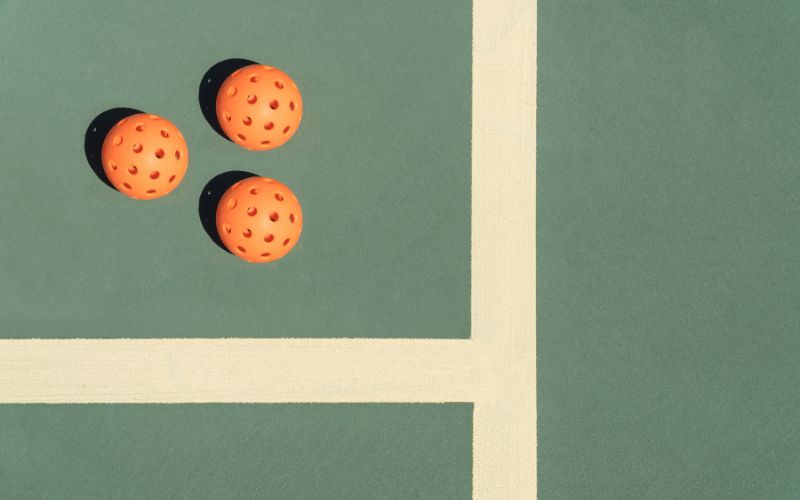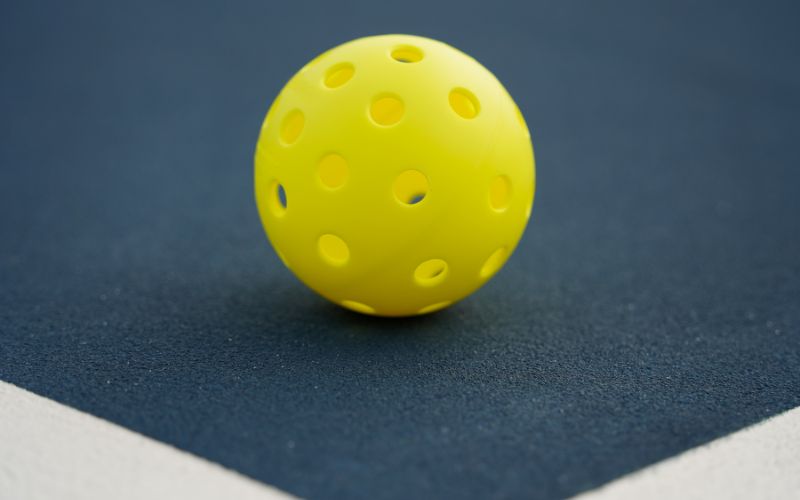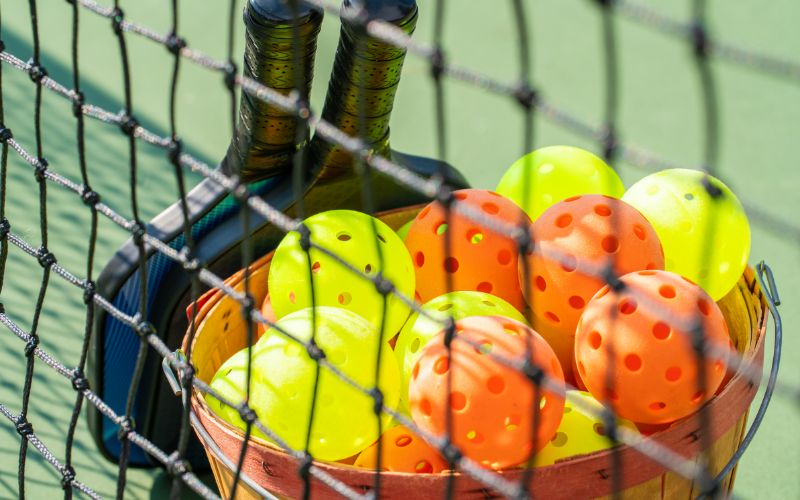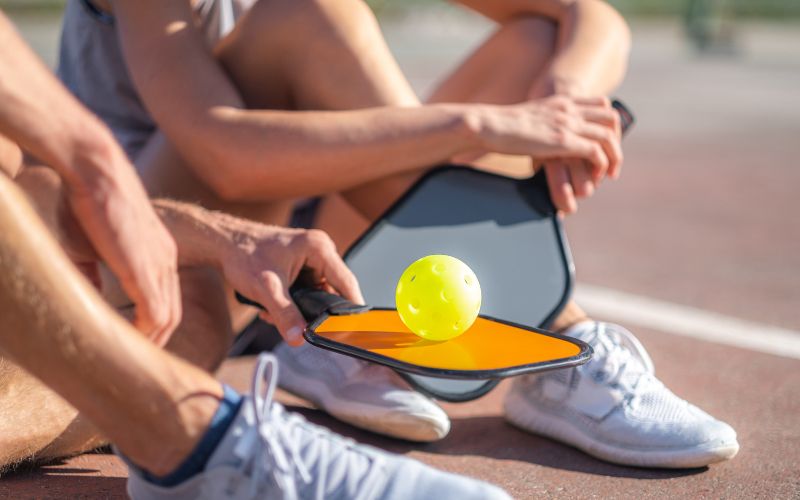Pickleball, a sport that combines elements of tennis, badminton, and ping pong, has gained immense popularity, and the choice of pickleball balls significantly impacts the game. Whether you prefer playing indoors or outdoors, understanding the characteristics of different types of pickleball balls is crucial for an optimal playing experience.
Outdoor Pickleball Balls
Characteristics of Outdoor Pickleballs
Outdoor pickleballs are specifically designed to withstand the challenges of playing in outdoor environments. Here are key characteristics that define outdoor pickleball balls:
Construction and Material
Outdoor pickleballs are crafted with a harder plastic compound, ensuring durability on rougher surfaces commonly encountered outdoors. The use of a harder material makes them more resistant to wear and tear.
Larger Holes
One notable feature of outdoor pickleballs is their larger number of holes. This design choice enhances the ball’s ability to navigate through windy conditions, providing stability and a more predictable flight path.
Bounce and Flight Trajectory
Outdoor balls typically have a slightly higher bounce than their indoor counterparts. This characteristic accommodates the varied playing conditions encountered outdoors, where wind and uneven surfaces can impact the ball’s trajectory.
Response to Wind Conditions
The construction of outdoor pickleballs, with larger holes and a heavier build, minimizes the impact of wind interference. This feature allows players to maintain control and accuracy during play in windy conditions.
Advantages of Outdoor Pickleballs
- Durability: The harder plastic construction ensures that outdoor pickleballs can withstand the rigors of playing on rough surfaces, providing long-lasting performance.
- Stability in Wind: Larger holes and a heavier weight contribute to a stable flight path, even in windy conditions, making outdoor balls suitable for various weather scenarios.
- Predictable Bounce: The slightly higher bounce of outdoor pickleballs allows players to anticipate and respond effectively, contributing to a consistent playing experience.
Indoor Pickleball Balls
Characteristics of Indoor Pickleballs
Indoor pickleballs are tailored for the controlled environment of indoor courts. Understanding the distinct characteristics of indoor pickleball balls is essential for players who enjoy the nuances of indoor play.
Construction and Material
Indoor pickleballs typically use a softer plastic material, making them lighter compared to their outdoor counterparts. This softer construction enhances the ball’s responsiveness during play.
Smaller Holes
Indoor pickleballs have fewer and smaller holes compared to outdoor balls. This design choice influences the ball’s behavior, resulting in a slower pace and lower bounce.
Bounce and Flight Trajectory
The lower bounce of indoor pickleballs contributes to a slower-paced game, allowing players to execute controlled shots with precision. The flight trajectory is influenced by the smoother surface of indoor courts.
Response to Indoor Surfaces
Indoor balls are designed to perform optimally on indoor surfaces, providing players with a consistent and predictable playing experience.
Advantages of Indoor Pickleballs
- Controlled Play: The softer and lighter construction of indoor pickleballs promotes controlled and precise shots, making them ideal for players who value finesse in their game.
- Predictable Bounce: The lower bounce contributes to a slower-paced game, allowing players to strategize and respond effectively, especially during rallies.
- Optimized for Indoor Courts: Indoor pickleballs are specifically crafted to perform well on the smooth surfaces of indoor courts, ensuring an ideal playing experience.
Indoor and Outdoor Pickleball Balls
Balancing the Differences
While indoor and outdoor pickleball balls have distinct characteristics, some balls are designed to bridge the gap between both environments. These indoor and outdoor pickleballs attempt to provide a versatile option for players who transition between different playing conditions.
Characteristics
- Material Composition: A balance between hardness and softness to accommodate both indoor and outdoor play.
- Hole Size: Moderate hole size to offer stability in the wind while maintaining a controlled bounce on indoor courts.
- Weight: A middle-ground weight that provides stability outdoors and responsiveness indoors.
Considerations for Indoor and Outdoor Pickleballs
- Adaptability: These balls are suitable for players who frequent both indoor and outdoor courts, offering adaptability to varying playing conditions.
- Versatility: Indoor and outdoor pickleballs aim to provide a versatile solution, allowing players to enjoy the game across different environments without compromising performance.
- Transition Seamlessly: Players can transition seamlessly between indoor and outdoor play without the need to switch between different ball types.
Can you interchangeably use indoor pickleballs for outdoor play and vice versa?
Technically, it’s possible, but not recommended. Utilizing an indoor ball outdoors is less advisable than using an outdoor ball indoors. Indoor balls, being lightweight and unsuitable for wind, exhibit slower play and aren’t designed for outdoor courts.
While it’s more common to witness outdoor balls being used indoors, the ideal scenario is to use indoor balls indoors and outdoor balls outdoors. Bringing an indoor ball to an outdoor match might attract curious glances from fellow players.
Let’s delve deeper into this discussion.
Indoor courts offer highly predictable conditions for pickleball. While wind effects are extensively discussed, there’s a crucial yet overlooked factor – the sun.
Playing pickleball under the intense midday sun in a Florida summer can significantly impact a lighter plastic pickleball, more commonly associated with indoor balls than outdoor pickleballs.
Conclusion
Understanding the characteristics of different types of pickleball balls is essential for players looking to enhance their playing experience. Whether you prefer the controlled environment of indoor courts or the dynamic challenges posed by outdoor play, choosing the right pickleball ball ensures optimal performance and enjoyment on the court. Consider your playing preferences, adaptability needs, and skill level when selecting the perfect pickleball ball for your game.
FAQs for “Types of Pickleball Balls: A Comprehensive Guide”
What are the key characteristics of outdoor pickleball balls?
Outdoor pickleballs have a harder plastic construction, larger holes for stability in wind, a higher bounce, and durability on rough surfaces.
How do indoor pickleball balls differ from outdoor ones?
Indoor pickleballs are softer and lighter with smaller holes, providing controlled play on indoor courts and a slower pace with lower bounce.
Can you use indoor pickleballs for outdoor play and vice versa?
Technically possible, but not recommended. Indoor balls are unsuitable for wind and slower outdoors. Outdoor balls can be used indoors with some adaptability.
What are the advantages of outdoor pickleballs?
Outdoor pickleballs offer durability on rough surfaces, stability in wind, and a predictable bounce, providing a consistent playing experience.
Are there pickleballs designed for both indoor and outdoor use?
Yes, some balls are crafted with a balance between hardness and softness, moderate hole size, and a middle-ground weight for versatile play in both environments.







